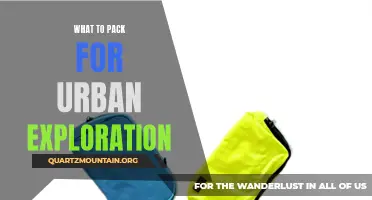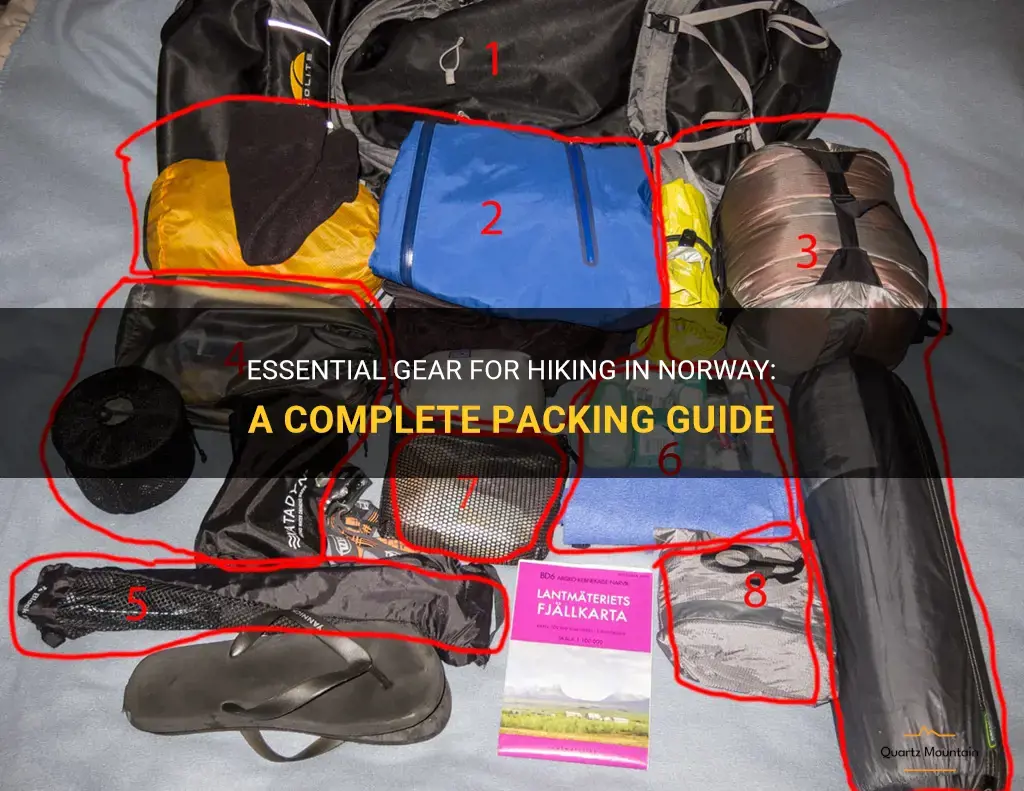
Are you planning a hiking trip to Norway? Norway is known for its incredible landscapes, stunning fjords, and challenging hiking trails. But before you embark on your adventure, it's important to pack the essential gear to ensure a safe and enjoyable journey. In this complete packing guide, we will cover everything from clothing to navigation tools, giving you the confidence to tackle Norway's breathtaking hiking trails. So, grab your backpack and let's get packing!
| Characteristics | Values |
|---|---|
| Weather | Unpredictable |
| Temperatures | Range from -5°C to 20°C |
| Terrain | Rocky and steep |
| Clothing | Layering system |
| Footwear | Sturdy hiking boots |
| Backpack | Waterproof and comfortable |
| Sleeping bag | Suitable for low temperatures |
| Tent | Lightweight and waterproof |
| Food and water | Lightweight and nutritious |
| Navigation | Map, compass, GPS |
| First aid kit | Essential items |
| Sun protection | Sunscreen, hat, sunglasses |
| Insect repellent | Effective against mosquitoes |
| Emergency equipment | Whistle, signaling mirror |
| Communication | Mobile phone, emergency contact info |
What You'll Learn
- What are the essential items to pack for hiking in Norway?
- Are there any specific clothing recommendations for hiking in Norway's varying weather conditions?
- What type of footwear is recommended for hiking in the Norwegian mountains?
- Are there any specific gear or equipment recommendations for hiking in Norway's rugged terrain?
- Can you provide tips on how to pack efficiently for a hiking trip in Norway, considering weight and space limitations?

What are the essential items to pack for hiking in Norway?
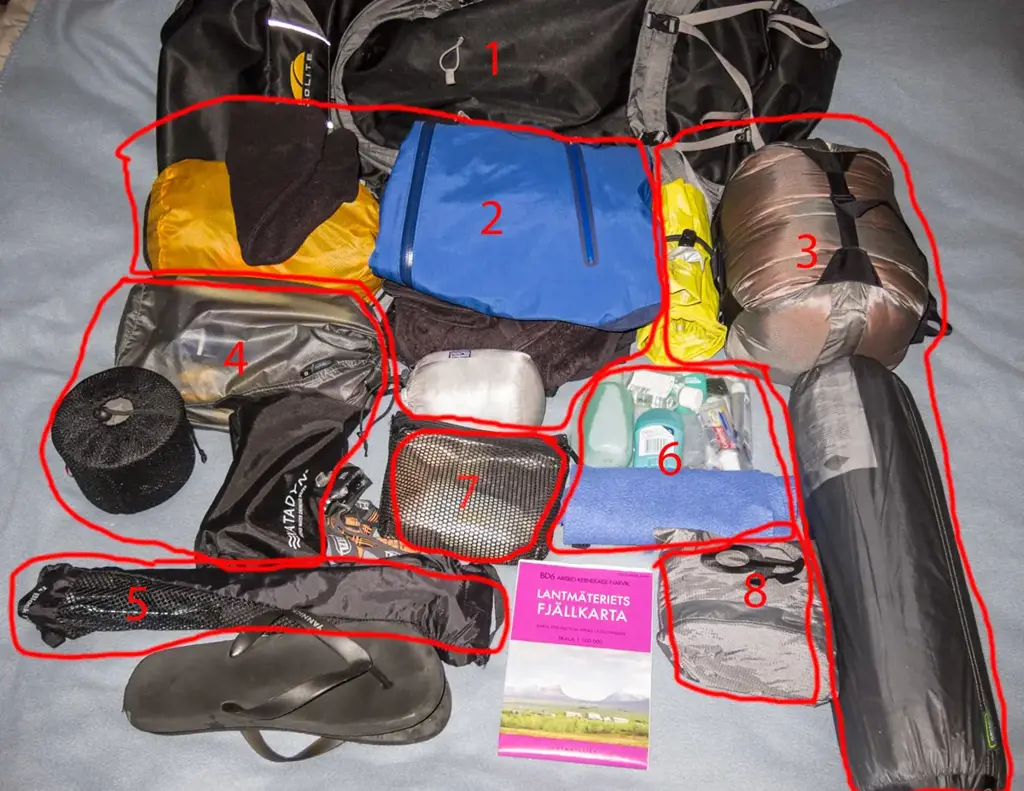
Hiking in Norway is an exhilarating experience that allows you to immerse yourself in the breathtaking natural beauty of the country. However, it is crucial to pack essential items to ensure your safety and comfort during your hiking adventure. Here is a comprehensive list of items to consider packing for a hike in Norway:
- Proper Hiking Boots: Norway's terrain can be rugged and challenging, so invest in a good pair of waterproof hiking boots with ankle support. This will provide stability and protect your feet during long hikes.
- Layered Clothing: Norway's weather can be unpredictable, even in the summer months. Pack lightweight, moisture-wicking and quick-drying clothing that can be layered to adjust to changing temperatures. Bring a waterproof jacket and pants to stay dry in case of rain.
- Backpack: A sturdy backpack with a hip belt is essential for carrying your provisions and equipment. Make sure it has enough space for water, snacks, extra clothing layers, a first aid kit, and any other items you may need during your hike.
- Map and Compass (or GPS): Norway offers a vast network of trails, and it is easy to get disoriented without a reliable navigation tool. Carry a detailed map of the area you intend to hike, a compass, and/or a GPS device to ensure you stay on track.
- First Aid Kit: Accidents can happen even on the most well-traveled paths. Pack a basic first aid kit that includes bandages, adhesive tape, antiseptic ointment, pain relievers, and any personal medications you may require.
- Water and Snacks: Dehydration is a real concern when hiking, so carry enough water to keep yourself hydrated throughout your journey. Pack high-energy snacks like nuts, dried fruit, or energy bars to sustain your energy levels.
- Sun Protection: Even if Norway is not known for its scorching heat, the sun's rays can still be intense, especially at higher altitudes. Bring sunscreen, a hat, and sunglasses to protect your skin and eyes from harmful UV rays.
- Navigation and Emergency Equipment: In addition to a map and compass, consider carrying a headlamp or flashlight with extra batteries, a whistle for emergencies, a pocket knife, and a lightweight emergency blanket.
- Hiking Poles: If you anticipate tackling steep or uneven terrain, hiking poles can provide additional stability and help alleviate strain on your knees. They can be especially useful during descents.
- Portable Stove and Cookware (for multi-day hikes): If you plan on embarking on a multi-day hike and camping along the way, a lightweight portable stove and cookware will allow you to prepare hot meals and beverages.
- Garbage Bags: Norway takes environmental conservation seriously, and hikers are expected to leave no trace. Pack a few garbage bags to dispose of your waste properly, minimizing your impact on the environment.
- Extra Essentials: Other items to consider packing include a whistle, insect repellent, a camera to capture the stunning landscapes, a power bank for recharging electronic devices, and a lightweight camping hammock for relaxation during breaks.
It is crucial to remember that the above list may vary based on the duration and difficulty of your hike. Always research the specific trail you plan to tackle and tailor your packing list accordingly. Additionally, check current weather conditions and consult with locals or experienced hikers for any specific recommendations or advice.
By packing these essential items, you will be adequately equipped to tackle the challenges and fully enjoy the mesmerizing beauty of hiking in Norway. Always prioritize safety, be prepared, and respect nature during your outdoor adventure.
Essential Items to Pack for Your Antenatal Hospital Stay
You may want to see also

Are there any specific clothing recommendations for hiking in Norway's varying weather conditions?

When hiking in Norway, it is important to be prepared for the country's varying weather conditions. The weather in Norway can be unpredictable, with changes happening quickly and frequently. Therefore, it is essential to have the right clothing to stay comfortable and safe during your hike. Here are some specific clothing recommendations for hiking in Norway's varying weather conditions.
Layering is key when it comes to hiking in Norway. Start with a base layer made of moisture-wicking material, such as merino wool or synthetic fibers. This layer will help keep you dry by wicking sweat away from your skin. It is important to avoid cotton as a base layer as it retains moisture, which can lead to discomfort and even hypothermia in wet conditions.
For the mid-layer, choose insulating clothing that can be easily added or removed depending on the temperature. Fleece jackets or down-filled sweaters are excellent options as they provide warmth without adding too much bulk. It is also a good idea to bring a lightweight waterproof jacket or shell as a top layer to protect you from wind and rain.
When it comes to bottoms, opt for hiking pants that are lightweight, breathable, and quick-drying. Convertible pants with zip-off legs are a great choice as they can easily be converted into shorts if the weather gets warmer. Make sure your pants have enough room to allow for freedom of movement while also being durable enough to withstand the rugged terrain.
Footwear is crucial for a successful hike in Norway. Invest in a pair of waterproof, sturdy hiking boots that provide ankle support. They should have a good grip for traction on wet and slippery surfaces. It is also important to wear high-quality hiking socks made of moisture-wicking materials to prevent blisters and keep your feet dry and comfortable.
Accessories such as a hat, gloves, and a buff or scarf are essential for protecting your extremities from the cold and wind. A hat will help retain heat and keep your head warm, while gloves will keep your hands cozy. A buff or scarf can be used to protect your neck, face, and ears from the wind chill.
It is also important to consider the time of year and the specific hiking trail you plan on tackling in Norway. In the summer months, the weather can range from warm and sunny to cold and rainy, so be prepared for all conditions. In higher elevations or during shoulder seasons, it is important to bring warmer clothing, including a heavier mid-layer and a warm hat.
Lastly, always check the weather forecast before heading out on a hike and make sure to pack and dress accordingly. It is better to be overprepared with extra layers and clothing than to be caught unprepared and uncomfortable during your hike.
In conclusion, having the right clothing is essential for hiking in Norway's varying weather conditions. Layering is key, starting with a moisture-wicking base layer, an insulating mid-layer, and a waterproof top layer. Invest in high-quality hiking boots, socks, and accessories to protect your feet and extremities. Consider the time of year and the specific trail you plan on hiking to determine the appropriate clothing to pack. Stay comfortable and safe by dressing appropriately and always checking the weather forecast before your hike.
The Ultimate Toledo Zoo Snooze Packing Guide: What to Pack for a Day of Relaxation and Exploration
You may want to see also

What type of footwear is recommended for hiking in the Norwegian mountains?
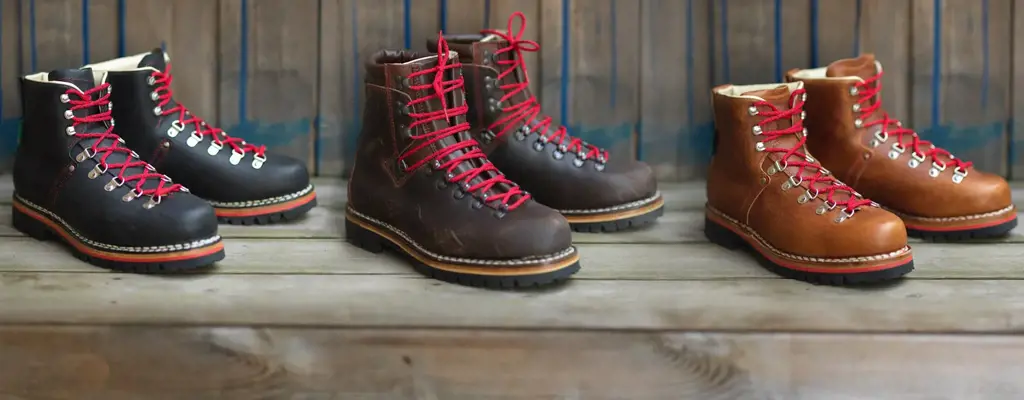
When hiking in the Norwegian mountains, it is essential to wear suitable footwear that provides comfort, support, and protection. The terrain in Norway can be rugged, with uneven surfaces, rocky paths, and wet conditions. Therefore, investing in the right hiking boots or shoes is crucial to ensure a safe and enjoyable hiking experience.
Here are some factors to consider when choosing footwear for hiking in the Norwegian mountains:
- Sturdy and Durable Construction: Look for hiking shoes or boots that are made of high-quality materials and have a sturdy construction. This will ensure that they can withstand the rugged terrain and rough conditions often encountered in the Norwegian mountains.
- Support and Stability: The footwear should provide excellent ankle support to help prevent injuries on uneven ground. Look for boots with higher ankle collars or hiking shoes with reinforced sides to provide extra stability.
- Waterproof and Breathable: Given the unpredictable weather in Norway, it is essential to have footwear that is both waterproof and breathable. This will keep your feet dry and comfortable, even if you encounter rain, wet grass, or muddy trails.
- Traction and Grip: The mountains in Norway can be slippery, especially when wet or covered in snow. Choose footwear with a reliable outsole that offers excellent traction and grip on various surfaces. Look for shoes or boots with deep lugs and a good rubber compound for enhanced traction.
- Comfortable Fit: Ensure that the footwear fits well and feels comfortable. It is recommended to try on several pairs and walk around in them to find the right fit. Opt for shoes or boots with cushioning in the midsole for added comfort during long hikes.
- Weight: Consider the weight of the footwear, as you don't want to be carrying unnecessary weight on your feet for extended periods. However, keep in mind that more substantial boots often provide better protection and support.
- Consider the Season: Depending on the time of year you plan to hike in the Norwegian mountains, you may need specific footwear. During the summer months, lightweight hiking shoes may suffice. However, in spring, autumn, or winter, when there is snow or colder temperatures, insulated and waterproof boots are necessary.
Here are a few examples of suitable footwear options for hiking in the Norwegian mountains:
- Full Leather Hiking Boots: These offer excellent durability, support, and protection. They are suitable for longer hikes and challenging terrain.
- Mid-cut Hiking Boots: These boots provide a good compromise between ankle support and weight. They are suitable for most hiking trips.
- Trail Running Shoes: These shoes are lightweight and offer excellent breathability and comfort. They are suitable for shorter hikes or for those who prefer a lighter option.
- Winter Hiking Boots: These boots are insulated and waterproof, making them suitable for hiking in snow or cold conditions.
Remember, choosing the appropriate footwear is just one aspect of hiking in the Norwegian mountains. It is also essential to wear proper hiking clothing, carry necessary gear, and follow safety guidelines to ensure a safe and enjoyable hiking experience.
The Essential Packing Guide for an Unforgettable Gorilla Trekking Adventure
You may want to see also

Are there any specific gear or equipment recommendations for hiking in Norway's rugged terrain?
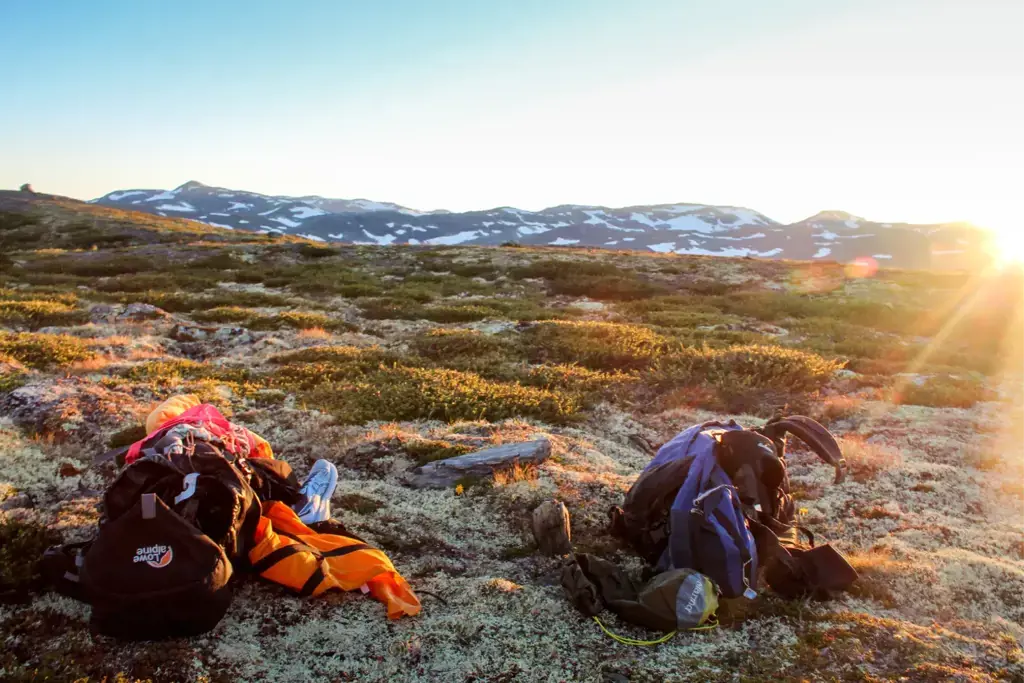
Hiking in Norway is a popular activity, thanks to its stunning landscapes and challenging trails. Whether you are tackling the famous Fjordland hikes, exploring the Jotunheimen National Park, or venturing into the Arctic wilderness, having the right gear and equipment is essential for a safe and comfortable hiking experience. Here are some specific gear and equipment recommendations for hiking in Norway's rugged terrain.
- Hiking boots: Invest in a good pair of hiking boots that provide ankle support and have a sturdy outsole for traction on uneven surfaces. Look for boots that are waterproof and breathable to keep your feet dry and comfortable in wet conditions.
- Layered clothing: Norway's weather can be unpredictable, and temperatures can vary greatly depending on the altitude and time of year. Dressing in layers allows you to adjust your clothing according to the changing conditions. Start with a moisture-wicking base layer, add an insulating midlayer, and top it off with a waterproof and windproof outer layer.
- Backpack: Choose a backpack with a capacity of at least 30 liters to carry your essential gear, such as water, snacks, extra layers, and a map. Look for a backpack with adjustable straps and a supportive hip belt to distribute the weight evenly and reduce strain on your shoulders and back.
- Navigation tools: Norway's rugged terrain can be challenging to navigate, especially in areas with limited cell phone reception. Carry a detailed topographic map, a compass, and a GPS device to help you stay on track and find your way in case of an emergency.
- Sleeping bag and tent: If you plan on camping during your hike, invest in a high-quality sleeping bag that is suitable for the season and temperatures you expect to encounter. A lightweight and durable tent is also essential for shelter during overnight stays in the wilderness.
- Water filtration or purification system: Norway has plenty of pristine lakes, rivers, and streams, but it's always a good idea to treat the water before drinking to avoid any potential contaminants. Carry a water filtration or purification system, such as a portable water filter, water purification tablets, or a UV sterilizer.
- First aid kit: Accidents can happen even in the most remote areas. Pack a well-stocked first aid kit that includes essentials like bandages, antiseptic wipes, pain relievers, and any personal medications you may need.
- Trekking poles: Trekking poles can provide stability and reduce strain on your knees and joints, especially when navigating steep and uneven terrain. Look for lightweight and adjustable poles that can be easily packed when not in use.
- Headlamp: A reliable headlamp is crucial for navigating in low-light conditions, such as early morning or late evening hikes. Look for a headlamp with multiple brightness settings and a long battery life.
- Emergency communication device: In case of an emergency, having a reliable means of communication can be a lifesaver. Consider carrying an emergency beacon, satellite phone, or a personal locator device that allows you to call for help even in areas without cell phone reception.
It's important to remember that the specific gear and equipment you need may vary depending on the duration, difficulty, and location of your hike. Do thorough research and consult with experienced hikers or local authorities to ensure you have all the necessary gear and equipment before embarking on your adventure in Norway's rugged terrain.
Essential Items for Your Beach Vacation: A Complete Packing Checklist
You may want to see also

Can you provide tips on how to pack efficiently for a hiking trip in Norway, considering weight and space limitations?
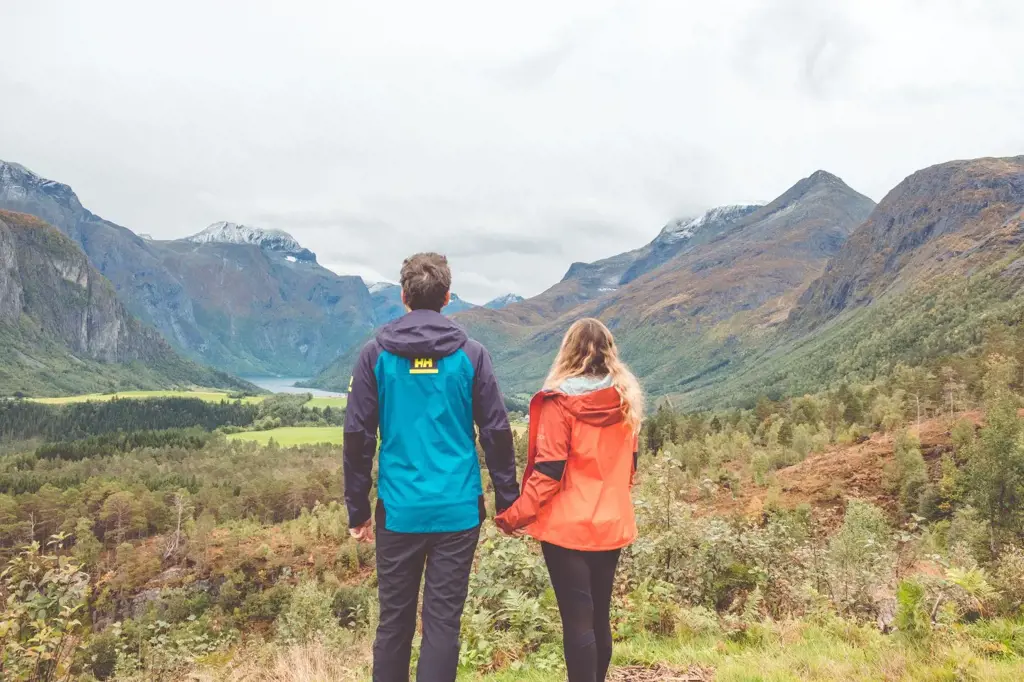
When preparing for a hiking trip in Norway, it's essential to pack efficiently to ensure you have everything you need while also considering weight and space limitations. Norway's stunning landscapes and challenging terrain make for an unforgettable hiking experience, but it's important to be well-prepared. Here are some tips to help you pack efficiently for your hiking trip in Norway:
- Research the climate and terrain: Before you start packing, make sure you know what to expect in terms of weather conditions and the type of terrain you'll be hiking. Norway's weather can be unpredictable, with both sunny and rainy days, so it's important to pack appropriate clothing and gear. Additionally, Norway has diverse landscapes, including mountains, fjords, and forests, so you'll need to pack accordingly.
- Invest in lightweight and compact gear: Since you'll be carrying all your belongings on your back, it's crucial to choose lightweight and compact gear. Look for hiking clothing and equipment that are specifically designed for weight-saving. For example, opt for a lightweight tent, a compact sleeping bag, and a portable stove. It's also worth investing in high-quality, durable gear that will last you throughout your trip.
- Choose multipurpose items: To save space and weight, select items that have multiple uses. For instance, choose a hiking jacket that is both waterproof and insulated, so you don't need to pack separate items for different weather conditions. Similarly, a multifunctional tool, such as a Swiss Army knife, can come in handy for various tasks on the trail.
- Prioritize essential items: Make a list of essential items you'll need on your hiking trip and prioritize them based on their importance. This will help you avoid overpacking and ensure you have everything you need. Essential items include a map and compass, first aid kit, headlamp, water purifier, and extra layers of clothing. Remember, it's better to pack light and have to buy or borrow something along the way than to carry unnecessary weight.
- Pack food strategically: Food can easily take up a lot of space and add weight to your backpack. Opt for lightweight, high-calorie foods such as dehydrated meals, energy bars, and nuts. Plan your meals in advance to avoid overpacking or running out of food. It's also a good idea to bring a stove and a small pot to cook meals and boil water.
- Use compression sacks and packing cubes: One of the best ways to save space and keep your gear organized is by using compression sacks and packing cubes. Compression sacks can compress your sleeping bag, clothes, and other soft items, while packing cubes can help separate and organize your gear. These tools can make a tremendous difference when it comes to optimizing space in your backpack.
- Practice proper packing technique: When packing your backpack, it's important to distribute weight evenly to maintain balance and comfort while hiking. Place heavy items closer to your back and towards the bottom of your pack. Keep frequently used items, such as snacks or rain gear, in easily accessible pockets. Additionally, make sure to secure your gear properly and use compression straps to prevent it from shifting during your hike.
By following these tips, you can pack efficiently for your hiking trip in Norway, ensuring you have everything you need while keeping weight and space limitations in mind. Remember to pack smart, stay prepared, and most importantly, enjoy the breathtaking beauty of Norway's outdoors.
Essential Items to Pack for a Two-Week Trip: A Men's Travel Guide
You may want to see also
Frequently asked questions
It is important to pack clothing that can be layered for varying weather conditions in Norway. Bring a waterproof and windproof outer shell, as well as warm layers such as fleece or down jackets. Don't forget to pack a hat and gloves, as temperatures can be chilly even in the summer months.
Make sure to pack sturdy and comfortable hiking boots or shoes. Opt for waterproof and breathable options to keep your feet dry and comfortable during hikes. It is also a good idea to bring extra pairs of socks to keep your feet dry and blister-free.
While hiking in Norway, it is essential to pack a good backpack to carry your essentials. Also, bring a map and compass or GPS device for navigation, as well as a headlamp or flashlight in case you encounter low light conditions. It is also a good idea to bring a small first aid kit and a multitool for emergency situations.
Pack lightweight and energy-dense foods such as trail mix, granola bars, dried fruits, and jerky to keep you fueled during hikes. It is also a good idea to bring a water bottle or hydration bladder to stay hydrated. Consider bringing a portable stove and dehydrated meals if you plan on doing multi-day hikes or camping.
In addition to the essentials mentioned earlier, it is a good idea to pack a rain cover for your backpack to protect your gear from unexpected rain showers. Don't forget to bring sunscreen, sunglasses, and mosquito repellent to protect yourself from the elements. Finally, always carry a reusable water bottle to reduce plastic waste and respect the environment.







